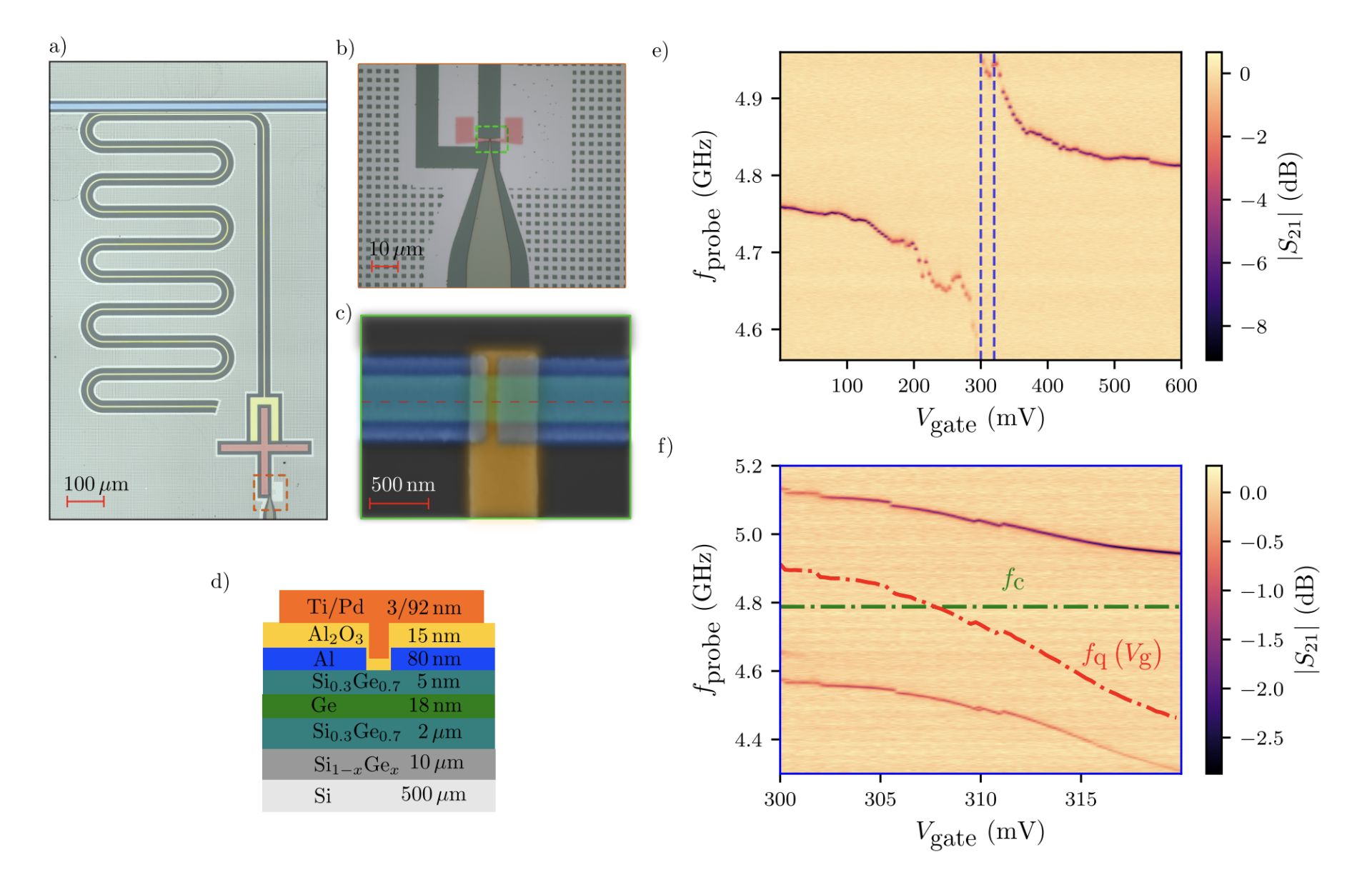The study explores the fabrication of a gate tunable transmon qubit, or gatemon, in planar Germanium (Ge), a CMOS-compatible material. This gatemon, a building block for hybrid quantum circuits, was created by inducing superconductivity in a two-dimensional hole gas. The qubit’s tunability was demonstrated across a broad frequency range. The research also discusses the challenges and solutions in merging superconducting and semiconductor spin qubit platforms. The results suggest that Ge gatemons could lead to the development of advanced hybrid quantum circuits and devices with new functionalities.
What is a Gate Tunable Transmon Qubit in Planar Germanium?
A gate tunable transmon qubit, also known as a gatemon, is a type of quantum bit that uses semiconductor Josephson junctions. These gatemons have recently emerged as building blocks for hybrid quantum circuits. In this study, a gatemon was fabricated in planar Germanium (Ge), a group IV CMOS-compatible material. This was achieved by inducing superconductivity in a two-dimensional hole gas by evaporating aluminum atop a thin spacer, which separates the superconductor from the Ge quantum well. The Josephson junction was then integrated into an Xmon circuit and capacitively coupled to a transmission line resonator. The qubit tunability was showcased in a broad frequency range with resonator and two-tone spectroscopy. Time-domain characterizations revealed energy relaxation and coherence times up to 75 ns.
What are the Advantages of Hybrid Quantum Circuits?
Hybrid quantum circuits interface different physical paradigms in the same platform, leading to devices with novel functionalities. Specifically, hybrid qubits combining superconductors and semiconductors merge the maturity of superconducting quantum circuits with the inherent tunability of semiconductors. Examples of recent achievements in the development of hybrid qubits include gatetunable transmons (gatemons), parity-protected qubits, and Andreev spin qubits (ASQs). The most direct approach to achieve interaction between a microwave resonator and a Josephson junction is through capacitive coupling between a resonator and a gatemon circuit. This coupling enables dispersive readout and, when combined with coherent control, serves as the foundation for progressing towards advanced hybrid circuits.
What are the Challenges and Solutions in Merging Superconducting and Semiconductor Spin Qubit Platforms?
Semiconductor spin qubits offer low footprint and high anharmonicity, but implementing long-range coupling over many qubits remains challenging. On the other hand, superconducting transmon circuits provide well-mastered control and readout via microwave signals, but at the expense of large footprints and lower anharmonicity, posing challenges to scalability and fast operations. Finding a suitable platform to merge the two systems is a formidable task. It requires a low microwave-loss substrate, transparent semiconductor-superconductor interfaces, and material free from nuclear spins for optimal spin qubit operation. In the field of semiconductor spin qubits, Silicon (Si) is an attractive material choice due to the mature complementary metal-oxide-semiconductor (CMOS) technology and isotopic purification. However, the absence of Fermi level pinning makes it challenging to proximitize silicon without using doping or annealing techniques.
How Does Germanium Fit into the Picture?
Germanium (Ge) and in particular GeSiGe heterostructures have shown great potential for highly-coherent spin qubits and gate tunable hybrid Josephson junctions, thus allowing the integration of semiconducting qubits with superconducting qubits on the same substrate. Ge gatemons within GeSi coreshell nanowires have been recently realized. However, while such CVD-grown coreshell wires have demonstrated ultrafast spin qubits, they face challenges in terms of spin dephasing times and scale-up. To circumvent both issues, the researchers built on the success of two-dimensional implementations in InAsInGaAs heterostructures and realized a gatemon based on a GeSiGe heterostructure where superconductivity is induced into the Ge hole gas by proximity from an Al layer evaporated on top of the SiGe spacer.
What are the Results and Implications of the Study?
The gatemon resonant frequency is electrically tunable in a range of 5 GHz and exhibits a quasi-monotonic linear dependence on the gate voltage. The qubit relaxation time T1 spans from 80 ns to 20 ns by varying the gate voltage, while T2 does not show any clear trend. A control qubit on the same material stack was also studied. These results, combined with the recent advances in the spin qubit field, pave the way towards novel hybrid and protected qubits in a group IV CMOS-compatible material. This could potentially lead to the development of more advanced hybrid quantum circuits and devices with novel functionalities.
Publication details: “A gate tunable transmon qubit in planar Ge”
Publication Date: 2024-03-25
Authors: O. Sági, Alessandro Crippa, M. Valentini, M. A. Janik, et al.
Source: arXiv (Cornell University)
DOI: https://doi.org/10.48550/arxiv.2403.16774

